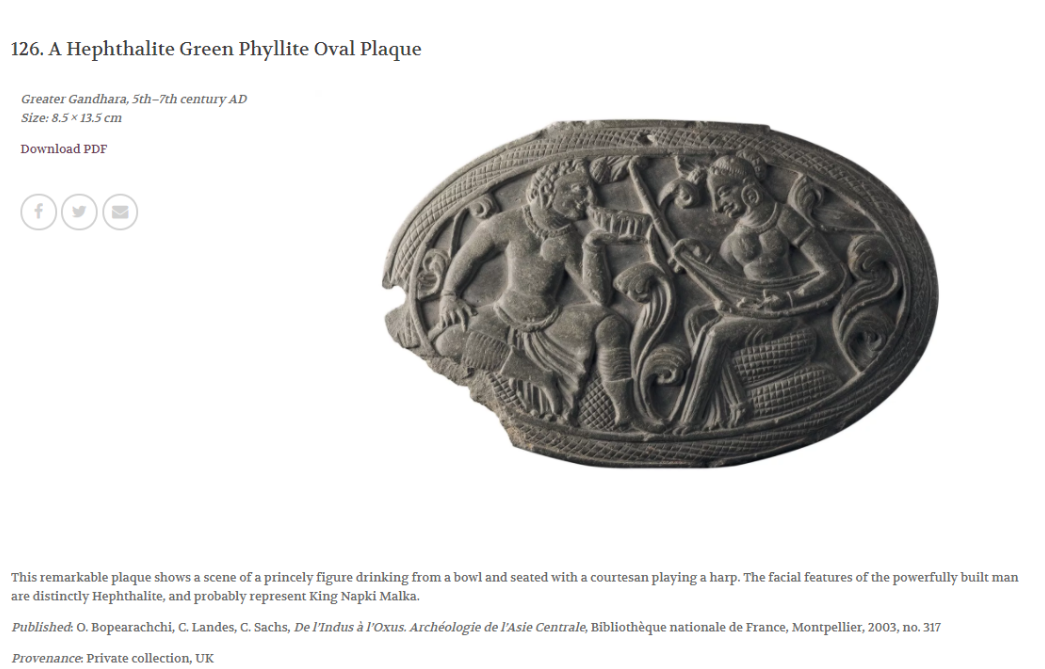Hephthalite (White Hun) green phyllite oval plaque 5th-7th C. CE
Some Chinese sources describe the Hephthalites as practitioners of polyandry (marriages consisting of one woman and multiple men). However, Étienne De La Vaissiére notes that the Chinese travelers confused the Hephthalites with the Bactrians. Many of the images of the Central Asian Huns do look physically similar to Bactrians. This is possibly why the Chinese confused the two peoples. Quite the opposite of the Bactrians, the closely related Sogdians practiced polygyny (marriages consisting of one man and multiple women):
"Chinese sources described polyandry as one of the Hephtalite customs. Polyandry, well known on the Western Tibetan plateau and quite unusual elsewhere, was used by Enoki as the cornerstone of his demonstration of the local origin of the Hephtalites (pp. 51–55). What Enoki could not have foreseen is the discovery in the Rob archive of a polyandric marriage contract antedating the first mention of the Hephtalites in Bactria by a century.
As usual in the Chinese descriptions of the Western world, their authors simply mixed together customs of the various components of the Bactrian society and gave them the name of the leading tribe, that of the Hephtalites. Polyandry was a genuine Bactrian custom, not a Hephtalite one."
-Étienne De La Vaissiére, Is There a “Nationality of the Hephtalites”?
Source:
Quote:



Comments
Post a Comment